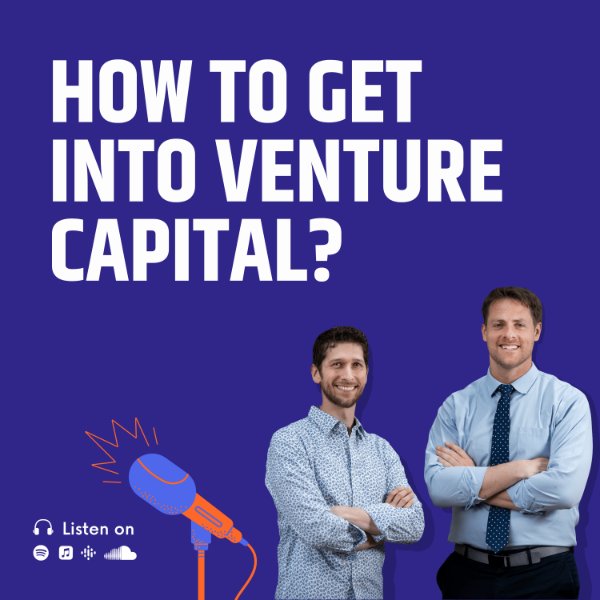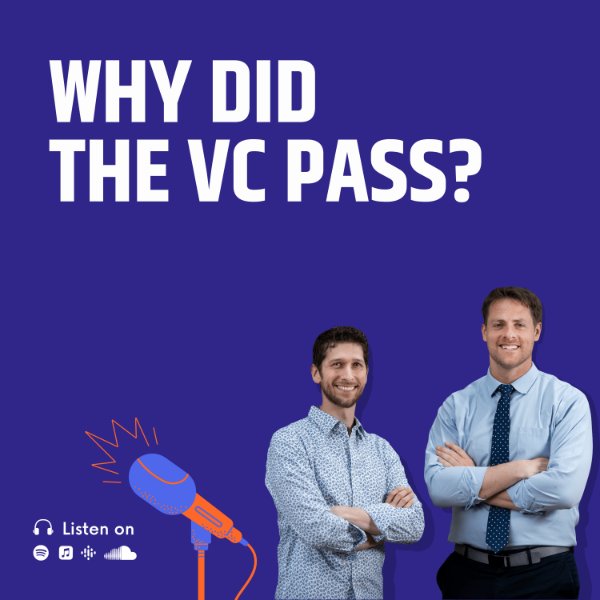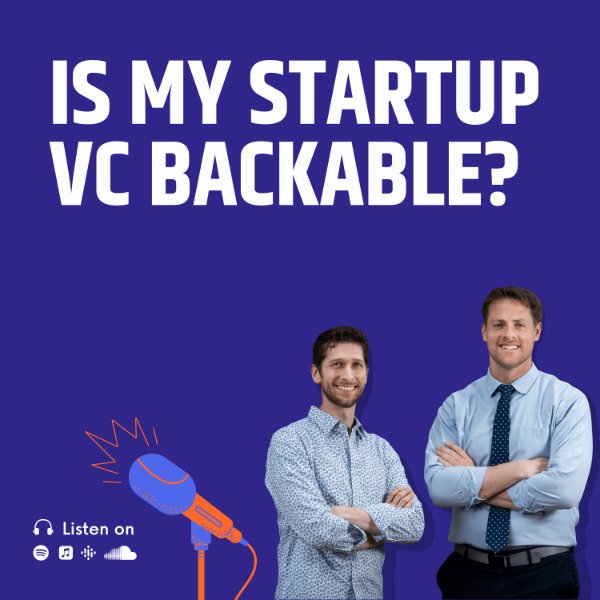Jon: Peter made a very good point. How do we measure success? Are they billionaire yet? Yes or no? That is a not accessible. AVC What's the general consensus? I mean, it is probably just very subjective.
Peter: But if I'm a successful VC How do I know if I'm a successful VC?
Jon: Are you are you beating the S&P 500? Are you beating the S&P seven? Like what? What are we looking at?
Peter: I know, most VCs be like, am I top quartile or not?
Jon: Regardless of what the S&P is?
Peter: Yeah, well, it's like, okay, I need to beat the S&P. And then if I look at other venture funds that are similar to us. Am I top quartile or not in terms of my performance?
Jon: What about the S&P seven? How many VCs actually beat like the top performing stocks in S&P?
Peter: I mean, the rough numbers are like half of funds barely. Or don't return all the capital that they they called.
Peter: so there you go. If you can't return the money that you called your or even if you do, just return the money that you called, you are not beating the S&P 500.
Jon: Over the long run. So you're saying half.
Peter: So the S&P usually generates about 10% over the long run. Right.
Peter: Seven downs generate.
Jon: More more than that, like the top performing stocks.
Peter: The S&P seven. Yeah, potentially. I mean, I haven't looked at the S&P seven performance, so I can't speak to that, but. All right. But yeah, I mean, like most VCs are going to want to try and beat the market and so they can beat the market. But then, you know, I feel like every VC I talk to is like, yeah, we're top, we're top quartile.
Jon: And then they make fun of other VCs. It's easy as numbers are horrible.
Peter: Yeah, they don't. They don't have good numbers. They suck.
Jon: They suck. They're not as good as our numbers. Can you believe that? Yeah. So, yeah, I'm like, Where are you going? This info you show, you invest in all the other risks or you have your part LP share the, you know, share the know. Yeah. The pitch decks.
Peter: Could be or it could just be like they're like they look at their portfolio like, I know those companies suck.
Jon: Okay? There's no way they got to return huge markdowns.
Jon: The realized gains or losses are huge.
Peter: They made a bunch of money when I went public, but then they just held the stock all the way down to zero. Then they blew most of their return by not selling early enough.
Jon: Get internal rate of return. Why is that important for VCs? The IRR?
Peter: So you have to understand why the internal rate of return is.
Jon: We'll show it on the screen.
Peter: So you have like a 10% IRR. That means that you're in your money is growing by 10% annually, compounding over a period. So it matters because the S&P 500, like I said, returns 10% annually, compounding, right? So it has a 10% IRR over the long run, you know, give or take. And so as a venture fund, you want to be able to show that like your money is growing faster.
Peter: So most VCs are targeting somewhere in the like 20 to 30% net to their investors. So what that means is that like you put in money into the fund, that money that you put in is growing by 20 to 30% every year, compounding over that time period.
Jon: Per year, not just 20 to 30% gain over two years.
Peter: Yet another 20 to 30% gain over the entire period. But every year it grew by 20 to 30%.
Jon: How is that different than the multiple on invested capital?
Peter: For the most part, I always cringe a little when I hear that when I when my students say.
Jon: My, I don't usually hear that term.
Jon: It's usually just the IRR is what all the VCs brag about are. IRR is bigger than theirs.
Peter: Yeah, well that's because IRR is kind of a vanity metric, but you can't eat IRR, as we say at our firm. So multiple is if I invest a dollar. How many dollars do I get back when all is said and done? So you can have and IRR on a deal by deal basis and you can have a multiple on invested capital animal on a deal by deal basis.
Peter: But then you can also have it on a fund. So if I invest $1,000,000 with a fund and then at the end of ten years they've invested and then distributed, you know, exited those invested and just investments and distributed the proceeds. And now I get back like three, $3 million. Then I would have a multiple on invested capital of three X.
Peter: And most funds target somewhere between three and five X returns on the fund overall. What that usually translate into is they have, caught 1 to 3 deals that generate huge returns in the like ten X plus range, a handful of deals that, you know, return like 2 to 5 X and then a handful that either don't return anything or return just their cost basis.
Peter: And then when you aggregate that all together, it comes out to somewhere in that like 2 to 5 X range. If you're investing in a seed fund, you would want to be targeting returns that are probably like north of like four X because there's a lot of risk. If you're doing something that's more Series A, maybe you're looking at like a 3 to 4 X, and if you are doing more growth stage investing, maybe it's somewhere in the 2 to 3 X, okay.
Peter: But in each of those situations, like you want a higher return because there's a higher risk that like it goes to zero. top performing venture funds like Sequoia have consistently put up 9 to 10 tax returns on their fund, which is part of the reason why they're, they've been so successful over the long run and are viewed as you know, one of the top performing if not the top performing venture funds out there.
Jon: How do they measure success like hit rate percentage of investments that were successful or does that really matter?
Peter: Yeah, some other than other things that some venture funds or LPs that are evaluating venture funds will look at is like number of hits. So successful investments. Another one is what's your loss ratio? So how many, how much, how many dollars or what percentage of your capital have you lost, versus how much have generated a return that tends to be more valuable when you're looking at like growth equity funds versus startups, or funds that focus on seed stage or series A, You also have what's called TVP, P.I. and P.I. So TVP P.I. is total value to paid in capital.
Peter: and that is looking at essentially the paper and cash gains on the overall portfolio relative to the amount of money you put in. So it's highly correlated to your make their multiple on invested capital. that the, the challenges is that TV P.I. includes paper gains. So you could say hey look our fund has a3x TV P.I., our TV P.I. of three and you know, all of it could be just paper gains.
Peter: And so those paper gains could evaporate right over time. Most funds raise money on TV. P.I., because there's typically not enough time that's gone on between the time they made the investment and the time they're raising their new fund. But the metric that most LPs should care about is what's called DPA, which is distributions to paid in capital.
Peter: and what that is, is how much cash has flown back to investors relative to the cash that they've put in. So if I put in favor of 0.5, that means for every dollar I've invested in the fund, they've distributed back to me $0.50.
Peter: ultimately, what happens is in the early days, your DPI is super low, maybe maybe zero for several years. Your TV API grows over time as the total value of the portfolio increases relative to the amount of money that you've invested. As those companies raise subsequent rounds of capital at higher valuations and then as those companies get acquired, go public or even go out of business, TV starts to pull down a little bit, particularly by due to those companies that have gone out of business, whereas DPI starts to rise until the two equal each other when the fund is fully liquidated.
Jon: That was a mouthful.
Jon: I think Chachi missed some of those those points in our agenda for this podcast to updated GDP do do eye to eye. And how do you measure success at the University Growth Fund? personally like how are you? Like, I'm a good VC because of X.
Peter: So I think, look, I measure it on probably two broad metrics. The first is, well, let me think about that. Outside of our student program, there are probably three core items, not really metrics, but items that I think about when it comes to success.
Peter: So one is, are we producing returns for our investors that are risk adjusted? and our higher than their alternatives. so, yes. Are we beating the S&P 500?
Peter: and for our advantage, are we doing a good job right. Top quartile, Whatever. So that's one
Peter: Two is highly correlated with that, which is, are we able to raise subsequent funds? Because if we're doing a good job for our peers and they're happy. Right. With the performance and everything else that we're doing for them, then they should invest in the next fund. And not only should they invest, but hopefully they invest more in the next fund they did than they did in the first fund because it's been de-risked to a certain degree.
Peter: So I measure that as a certain amount of success, Like if if I have great performance, but my LPs are pissed at me and don't want to give me more money in my next fund than I've fundamentally failed. Alternatively, like, there are some funds where, that this is in our, our situation because we haven't raised that many funds, but I know of funds where they're on Fund 12 and Fund 11 was a total train wreck and did that not perform.
Peter: But their investors pony back out for Fund 12 because they've done a good job on funds. One, two, three, four, five, six, seven, eight, nine, ten. Right. And the LPs recognize that you can just like this is a long term play and maybe you're going to have some underperforming funds here and there, but they're going to continue to support the fund because they're good people and they're making good investments.
Peter: And this was just like a market timing thing. So I think that's like the next category. that matters. And then yeah, the third category that matters to me is like, ah, we having a meaningful impact on entrepreneurs and students and our peers and creating, you know, something that is broadly speaking like benefit all to the constituents and the parties that matter, whether it's the startups, the entrepreneurs, the community, the LPs, the students, the general partners like all of that are like, do we feel like we're we're additive to the ecosystem overall, or are we taking from it?
Peter: Right, I mean, negative influence. So those are the ways in which I measure success or failure.
Jon: Okay. How many funds are you technically? Have you managed the part like the lead on managing partner? fourth fund. Third, third to.
Peter: My partner and I ran the university venture fund for about eight years, took over operations of that. We didn't raise it.
Peter: But we invested about a little more than half of it, I think. And then, yeah, we raised university growth funds one and two.
Jon: Okay, So you're considered like a seasoned almost five one, four or five, I guess based on our last podcast.
Peter: Our last podcast, I talked about how you're considered emerging by many until you're done like fund five. So I've got a few more funds to go.
Jon: All right. Well, I think this helps was good at knowing how VCs measure success and how Peter measure success and how the university Growth Fund measures success.
Peter: We're trying. All right. We do it.
Jon: Give us a five star review. Go to the comments we will like.
Peter: That's how John knows whether or not this podcast is accessible.
Jon: See, the downloads just continue to grow. So we're very.
Peter: Thankful for tell your friends and family.
Jon: All right. Thanks, guys. See you soon. Next episode.





